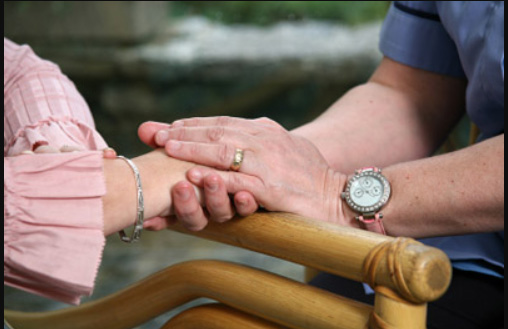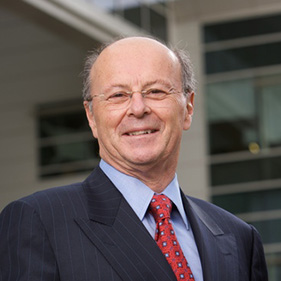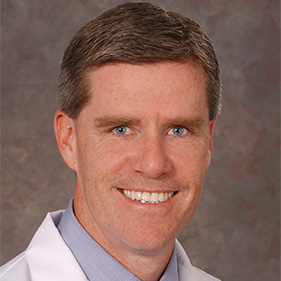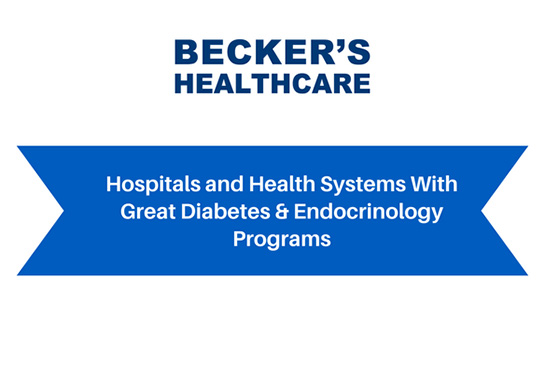UC Davis Health System Hospice Program celebrates 30th anniversary
The UC Davis Health System Hospice Program, which provides care for terminally ill patients who wish to remain at home or in a home-like setting, recently celebrated its 30th anniversary.

Fred Meyers, a young medical oncologist at UC Davis Medical Center in the late 1970s, recognized a void in patient treatment that he thought needed to be addressed. In 1981, working with John Edward Watson-Williams, a professor with special expertise in hemophilia and sickle cell anemia, the two physicians conceived and built UC Davis Hospice Program from the ground up.
"Together, we saw a need to reduce suffering, particularly in that era before certain advances in therapeutics had emerged," said Meyers, who today serves as executive associate dean for the UC Davis School of Medicine.
Meyers also was founding director of the West Coast Center for Palliative Care Education and Research, which was among the first in the United States to conduct research and train health-care providers in methods to reduce the pain, symptoms and stress of serious or terminal illness.
A continuum of care from home to clinic to hospital
UC Davis' hospice services have grown significantly over the past three decades, as have programs around the country. According to the National Hospice and Palliative Care Organization, in 2009 an estimated 1.5 million patients received hospice services, with more than 40 percent of all deaths in the United States occurring under the care of such programs. The organization also has found that eight out of 10 Americans want to be cared for in their homes if facing a life-limiting illness.
Together, we saw a need to reduce suffering, particularly in that era before certain advances in therapeutics had emerged."—Fred Meyers
The evolution of end-of-life care reflects the public's growing acceptance, and now common expectation, that they receive hospice services. The services represent what experts say are the epitome of patient- and family-centered care as it is coordinated over the continuum of care in the home, clinic and hospital.
"It used to be almost taboo for physicians to discuss end-of-life care, said Jack MacMillan, associate clinical professor of internal medicine and medical director for the health system's hospice program. "Years ago, both patients and physicians were hesitant to bring it up. Now people want to talk about their choices for end-of-life care and, once you start having those discussions and bridging that gap, it's amazing how comfortable the conversation becomes."
About UC Davis Health System
UC Davis Health System is improving lives and transforming health care by providing excellent patient care, conducting groundbreaking research, fostering innovative, interprofessional education, and creating dynamic, productive partnerships with the community. The academic health system includes one of the country's best medical schools, a 631-bed acute-care teaching hospital, an 800-member physician's practice group and the new Betty Irene Moore School of Nursing. It is home to a National Cancer Institute-designated cancer center, an international neurodevelopmental institute, a stem cell institute and a comprehensive children's hospital. Other nationally prominent centers focus on advancing telemedicine, improving vascular care, eliminating health disparities and translating research findings into new treatments for patients. Together, they make UC Davis a hub of innovation that is transforming health for all.
For more information, visit the health system's website. To learn more about hospice at UC Davis, visit the program's website.
MacMillan, who as a medical student didn't know anything about hospice, has seen an increase in medical students and residents selecting hospice as one of their clinical rotations.
"Students are much more interested in exploring the role that palliative care and hospice can play in the care of patients, said MacMillan. "It aligns with our mission as a teaching hospital, and it is an integral part of educating future health-care providers so that the benefits of palliative care and hospice become even more widely available."
Recognized for broad access to palliative care
UC Davis' hospice program stands out for providing services to a unique range of people. Thirty-five percent of its patients are under the age of 65, compared to just 17 percent nationally. The health system also treats a much more ethnically diverse patient population. About 38 percent of its hospice patients come from ethnically diverse backgrounds, compared to a national average of about 20 percent. The numbers reflect both the diversity of the Sacramento region and that many hospice programs restrict their services to Medicare (65 and older) patients. UC Davis' hospice treats all ages, including newborns and pediatric patients. During one week in September 2011, for example, the program admitted four patients who were in their 40s.
UC Davis also is recognized for having pioneered "simultaneous care," an initiative that advocates for patients with advanced disease to receive both investigational treatments and palliative care. Traditionally, cancer patients who had exhausted standard therapies faced the choice of enrolling in a clinical trial for an investigational drug that might extend their life or entering hospice.
Studies have emerged that this model really benefits patients on many levels."—John MacMillan
"Studies have emerged that this model really benefits patients on many levels," said MacMillan, who noted that simultaneous care was developed at UC Davis by Fred Meyers, with support from a multi-million dollar grant from the Robert Wood Johnson Foundation and the National Cancer Institute. "It allows patients and families to simultaneously have access to two beneficial options, optimizing both palliative care goals while also offering patients with advanced diseases access to new and potentially better therapies. Moreover, we've found that health-care providers are happier with this multidisciplinary model of care, too, because it gives them another treatment tool to improve the care of their patient."
The evolution of the hospice movement, particularly with more sophisticated tools and end-of-life care becoming more prominent and desirable, provides new opportunities for the UC Davis program. Despite the challenges of providing comprehensive hospice care in a competitive health-care environment like Sacramento, specialists like Meyers view hospice and palliative care as crucial components for advancing health in any community.
"Hospice and palliative care offer one of our best models for high-quality health care," said Meyers, who helped bring hospice services to underserved populations in prisons and remote rural communities using telemedicine video connections. "Offering specialized and supportive care to individuals who are in the middle stages of their diagnoses and treatment is where many experts see the future of hospice. It's patient- and family-centered care. Plus, it's efficient, effective, and always delivered in a timely fashion. Hospice really reflects the very best in health-care quality."





